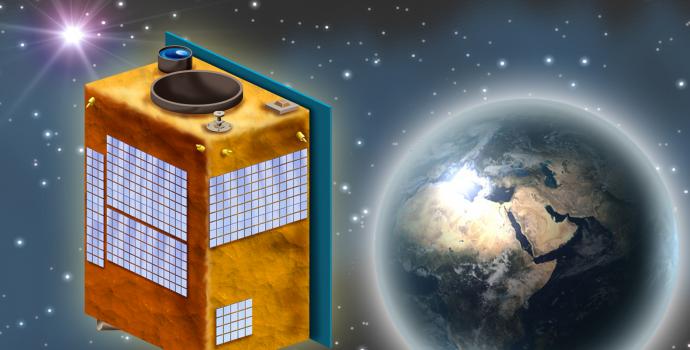ULTRASAT is a scientific mini-satellite carrying a telescope with an unprecedentedly large field of view (210 squared degrees) observing in the ultraviolet (220-280 nm,UV), that is proposed by an Israeli/US collaboration to be constructed and launched to a high-altitude (near geostationary) orbit by 2020/21. The wide field of view and the advanced UV detectors will enable the discovery and monitoring of transient sources within a cosmic volume 300 times larger than that of the most powerful UV satellite to date, GALEX. The main goals of the mission are to investigate how massive stars die in Supernova (SN) explosions and to study the masses and the environments of supermassive black holes in the centers of galaxies. In addition, the satellite will provide real-time alerts about newly discovered transient events to the global community, and will explore the rich world of UV transients, including the discovery of events in which stars are being "swallowed" by massive black holes, the identification of sources of gravitational-waves and high-energy neutrinos, monitoring of variable stars, and searching for planets around white dwarf stars. The ULTRASAT initiative was born in 2010, as an attempt by Weizmann Institute and Caltech scientists together with the Israel Space Agency (ISA) to answer the question: Do the proven capabilities of the Israeli space industry in building mini-satellites enable the construction of a satellite providing cutting edge science, which is significantly smaller (~1m3), lighter (~100kg) and cheaper (~100M$, including launch) than most space missions. The success of ULTRASAT will be a clear and positive answer to this question, and will lead the way to future similar missions. The science mission is jointly led by Weizmann Institute (PI – Eli Waxman) and Caltech (PI – Shri Kulkarni) teams, together with international colleagues. The technological aspect of the mission is led by IAI-MBT (responsible for the construction of the spacecraft, for the integration of the telescope to the spacecraft and of the spacecraft to the launch vehicle, and for mission operations), and by JPL (responsible for the construction of the telescope and its UV-optimized camera, for contracting the launch opportunity and for data archiving), under a joint management of ISA and NASA. A proposal for funding the US part of the mission, including a detailed description of the technological implementation, has been submitted to NASA-HQ as part of the Astrophysics Explorer program. A decision on funding the detailed design phase, Phase A, where the alternative of an Elbit-ELOP provided telescope will also be considered, is expected around June 2015.
ULTRASAT

ULTRASAT
Performers:
מכון ויצמן למדע, התעשייה האווירית לישראל מבת, מעבדות ההנעה הסילונית של נאס"א JPL, חברת Space Systems Loral, המכון הטכנולוגי של קליפורניה (Caltech), מכון קרנגי למדע.
Updated on:
22.09.2022









